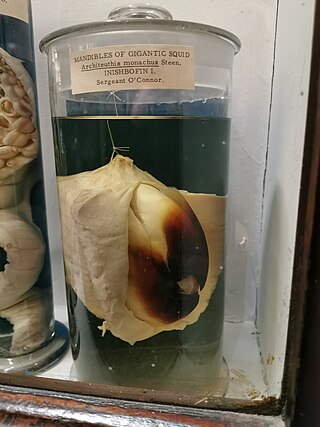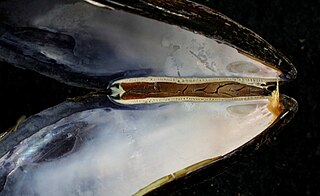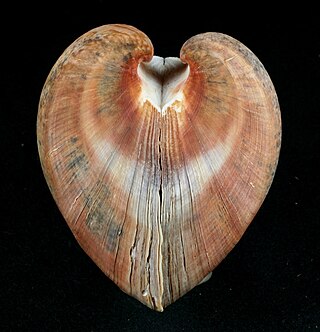A beak is an anatomical structure of birds and turtles, serving as the mouth and jaws.
Contents
Beak may also refer to:
A beak is an anatomical structure of birds and turtles, serving as the mouth and jaws.
Beak may also refer to:
Shell may refer to:
Rostrum may refer to:
The beak, bill, or rostrum is an external anatomical structure found mostly in birds, but also in turtles, non-avian dinosaurs and a few mammals. A beak is used for eating, preening, manipulating objects, killing prey, fighting, probing for food, courtship, and feeding young. The terms beak and rostrum are also used to refer to a similar mouth part in some ornithischians, pterosaurs, cetaceans, dicynodonts, anuran tadpoles, monotremes, sirens, pufferfish, billfishes and cephalopods.
Rostral may refer to:
Anomia may refer to:
A URL is a uniform resource locator for a Web resource.
Windowpane or paned window may refer to:
Pteria may refer to:

Rostrum is a term used in anatomy for a number of phylogenetically unrelated structures in different groups of animals.
Pecten or pectin may refer to:
Escutcheon may refer to:

A bivalve shell is part of the body, the exoskeleton or shell, of a bivalve mollusk. In life, the shell of this class of mollusks is composed of two hinged parts or valves. Bivalves are very common in essentially all aquatic locales, including saltwater, brackish water, and freshwater. The shells of bivalves commonly wash up on beaches and along the edges of lakes, rivers, and streams. Bivalves by definition possess two shells or valves, a "right valve" and a "left valve", that are joined by a ligament. The two valves usually articulate with one another using structures known as "teeth" which are situated along the hinge line. In many bivalve shells, the two valves are symmetrical along the hinge line—when truly symmetrical, such an animal is said to be equivalved; if the valves vary from each other in size or shape, inequivalved. If symmetrical front-to-back, the valves are said to be equilateral, and are otherwise considered inequilateral.
A culmen is a top, a summit or a culminating point. It may also refer to:

Rostratus (masculine), rostrata (feminine) or rostratum (neuter) is a Latin adjective meaning "beaked, curved, hooked, with a crooked point, or with a curved front".

All extant cephalopods have a two-part beak, or rostrum, situated in the buccal mass and surrounded by the muscular head appendages. The dorsal (upper) mandible fits into the ventral (lower) mandible and together they function in a scissor-like fashion. The beak may also be referred to as the mandibles or jaws.

This article describes anatomical terminology that is used to describe the central and peripheral nervous systems - including the brain, brainstem, spinal cord, and nerves.

The umbo is the vaguely defined, often most prominent, highest part of each valve of the shell of a bivalve or univalve mollusc. It usually contains the valve's beak, the oldest point of the valve, and its degree of prominence and position relative to the hinge line are sometimes helpful in distinguishing bivalve taxa. The umbo forms while the animal is a juvenile, and radial growth subsequently proceeds around that area. The umbo is situated above the hinge line. In those bivalves where the umbones do not protrude, as is the case for example in some mussels, the umbones can nonetheless usually be readily identified by examining the concentric growth lines of the shell.

A hinge ligament is a crucial part of the anatomical structure of a bivalve shell, i.e. the shell of a bivalve mollusk. The shell of a bivalve has two valves and these are joined by the ligament at the dorsal edge of the shell. The ligament is made of a strong, flexible and elastic, fibrous, proteinaceous material which is usually pale brown, dark brown or black in color.

The beak is part of the shell of a bivalve mollusk, i.e. part of the shell of a saltwater or freshwater clam. The beak is the basal projection of the oldest part of the valve of the adult animal. The beak usually, but not always, coincides with the umbo, the highest and most prominent point on the valve. Because by definition, all bivalves have two valves, the shell of a bivalve has two umbones, and two beaks.

Leptostomia is a genus of long-beaked pterosaur from the mid-Cretaceous (?Albian-Cenomanian) of Morocco, North Africa. The type species is L. begaaensis, which was named and described in 2021 from sediments of the Kem Kem Group in Morocco. It was a small animal with a long, slender bill which is thought to have been used to probe sediments for worms and other invertebrates, similar to kiwi birds and curlews. Leptostomia is likely a member of the Azhdarchoidea.